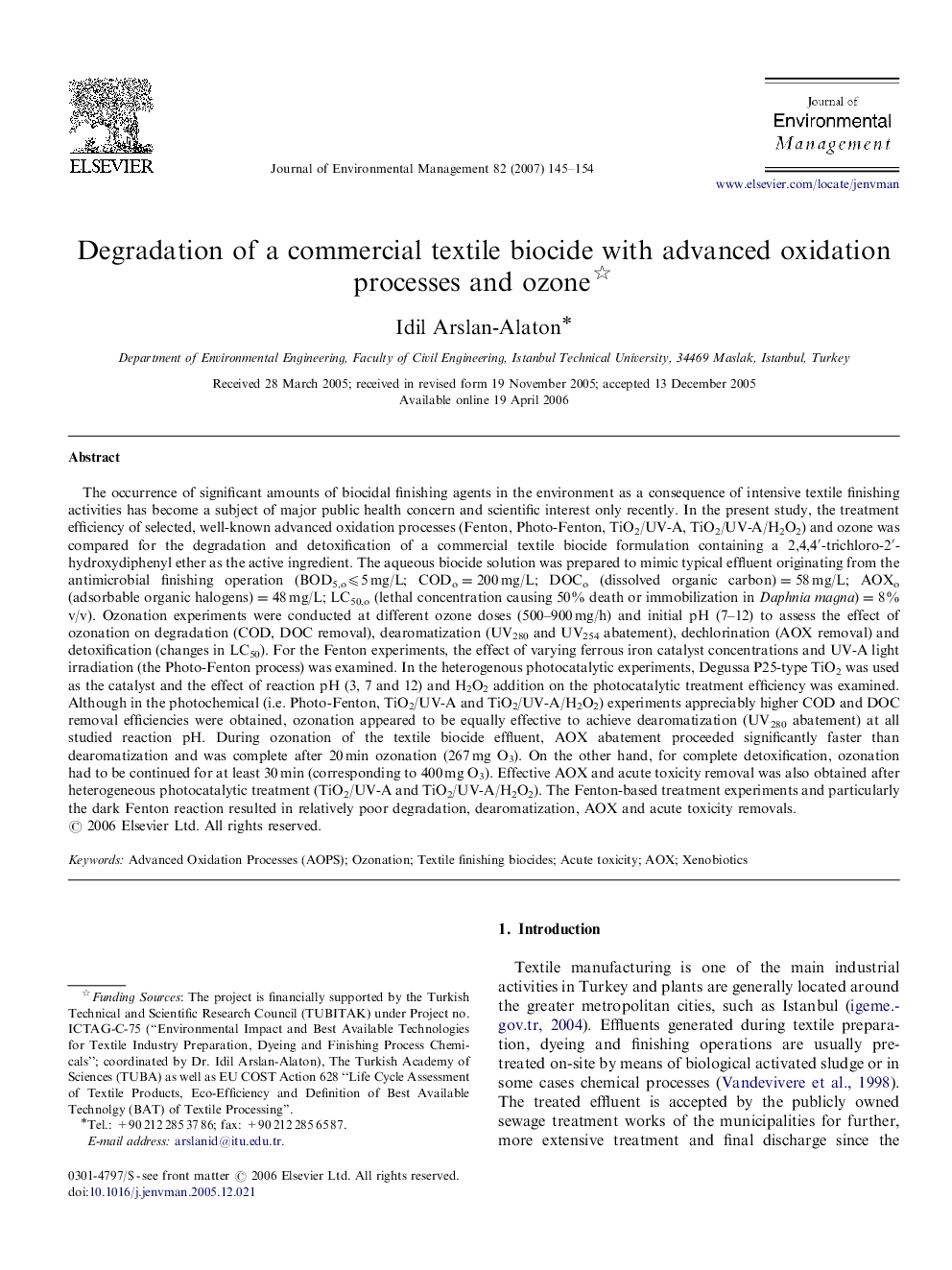| کد مقاله | کد نشریه | سال انتشار | مقاله انگلیسی | نسخه تمام متن |
|---|---|---|---|---|
| 1057885 | 947095 | 2007 | 10 صفحه PDF | دانلود رایگان |

The occurrence of significant amounts of biocidal finishing agents in the environment as a consequence of intensive textile finishing activities has become a subject of major public health concern and scientific interest only recently. In the present study, the treatment efficiency of selected, well-known advanced oxidation processes (Fenton, Photo-Fenton, TiO2/UV-A, TiO2/UV-A/H2O2) and ozone was compared for the degradation and detoxification of a commercial textile biocide formulation containing a 2,4,4′-trichloro-2′-hydroxydiphenyl ether as the active ingredient. The aqueous biocide solution was prepared to mimic typical effluent originating from the antimicrobial finishing operation (BOD5,o⩽5 mg/L; CODo=200 mg/L; DOCo (dissolved organic carbon)=58 mg/L; AOXo (adsorbable organic halogens)=48 mg/L; LC50,o (lethal concentration causing 50% death or immobilization in Daphnia magna)=8% v/v). Ozonation experiments were conducted at different ozone doses (500–900 mg/h) and initial pH (7–12) to assess the effect of ozonation on degradation (COD, DOC removal), dearomatization (UV280 and UV254 abatement), dechlorination (AOX removal) and detoxification (changes in LC50). For the Fenton experiments, the effect of varying ferrous iron catalyst concentrations and UV-A light irradiation (the Photo-Fenton process) was examined. In the heterogenous photocatalytic experiments, Degussa P25-type TiO2 was used as the catalyst and the effect of reaction pH (3, 7 and 12) and H2O2 addition on the photocatalytic treatment efficiency was examined. Although in the photochemical (i.e. Photo-Fenton, TiO2/UV-A and TiO2/UV-A/H2O2) experiments appreciably higher COD and DOC removal efficiencies were obtained, ozonation appeared to be equally effective to achieve dearomatization (UV280 abatement) at all studied reaction pH. During ozonation of the textile biocide effluent, AOX abatement proceeded significantly faster than dearomatization and was complete after 20 min ozonation (267 mg O3). On the other hand, for complete detoxification, ozonation had to be continued for at least 30 min (corresponding to 400 mg O3). Effective AOX and acute toxicity removal was also obtained after heterogeneous photocatalytic treatment (TiO2/UV-A and TiO2/UV-A/H2O2). The Fenton-based treatment experiments and particularly the dark Fenton reaction resulted in relatively poor degradation, dearomatization, AOX and acute toxicity removals.
Journal: Journal of Environmental Management - Volume 82, Issue 2, January 2007, Pages 145–154